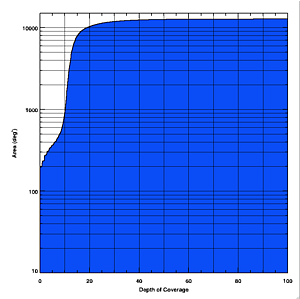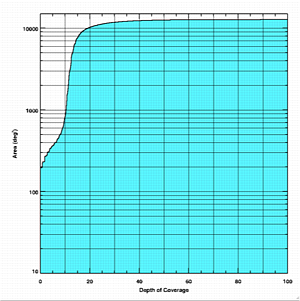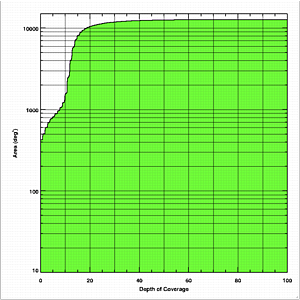


VII. 3-Band Cryo Data Release
2. 3-Band Cryo Data Products
The WISE 3-Band Cryo Data Release products are comprised of data taken
during the mission's 3-Band Cryo survey phase. This phase
covers the time following the exhaustion of solid hydrogen in the WISE payload
outer cryogen tank,
while the detectors and telescope were still cooled by the
inner cryogen tank. During this
time, WISE's W1, W2 and W3 bands were operational and
continued to acquire useful data, but the W4 detector was saturated by
thermal emission from the warming telescope. The sensitivity achieved
in the W1 and W2 bands was similar to that during the full cryogenic
mission phase. The W3 measurement sensitivity was degraded and decreased
steadily during the 3-Band Cryo phase because of the increasing
telescope temperature and
decreasing exposure times.
WISE scanned approximately 30% of
the sky during the 3-Band Cryo survey phase continuing with the
same strategy that was used during the full cryogenic survey.
WISE scanned along lines of constant ecliptic longitude from near one
ecliptic pole to near the other pole with a scan rate close to the orbital
rate of 3.8 arc-minutes/second in order to always point away from the Earth.
Each semi-circular track from ecliptic pole to ecliptic pole is called
a scan. During each scan
WISE took a frameset every 11
seconds. Each 3-Band Cryo frameset contains
three images, one for each of the W1, W2 and W3 bands, with all bands
observing the same 47x47 arc-minute square patch of sky.
Images within each frameset were rejected and not included in the higher
level data products if they were streaky due to spacecraft acceleration
or if scattered Moon light was too strong, a problem that was worse at
long wavelengths.
The highest level data products are the:
- co-added Image Atlas, which has been match
filtered to maximize signal-to-noise, and
- Source Working Database of over 261
million detections made on the Atlas Images with signal-to-noise ratio greater
than approximately 3.5 in at least one WISE band.
The lower-level data products included in the release are the
Single-exposure images (Level 1b)
and a
Database of all the object
detections on the Single-exposure image. This database is very useful for
variability studies.
The Single-exposure images and object detection database include
lower quality frames that
were not used for making the higher level products.
- Range of Observation Dates Represented in the 3-Band Cryo Release:
- 2010 August 6 10:35:04 UTC to 2010 September 29 18:39:37 UTC
- Number of Scans and Single-Exposures Represented in the 3-Band Cryo Release:
- Scans: 1,643
- Single-Exposures:
- Total number acquired in all scans: 392,879
- Number of framesets used in Multiframe Processing after quality and dynamic filtering to construct the Image Atlas and Source Working Database (see VII.4):
| W1 | 379,310 |
|---|
| W2 | 377,845 |
|---|
| W3 | 348,291 |
|---|
- Number of 1.564°x1.564° Atlas Tiles
Included in the 3-Band Cryo Release: 5,649
- Area Covered by the 3-Band Cryo Release:
- Sky Maps
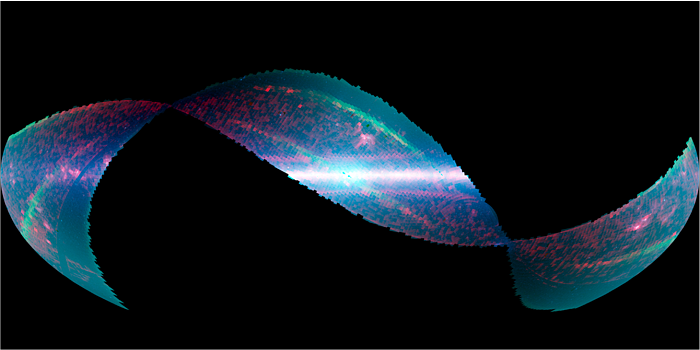 |
| Figure 4 - Aitoff galactic projection showing a 3-color
composite mosaic of the 5,649 3-Band Cryo Release Atlas Images. Galactic north
is towards the top and galactic longitude increases to the left. Blue is W1,
green is W2 and red is W3. |
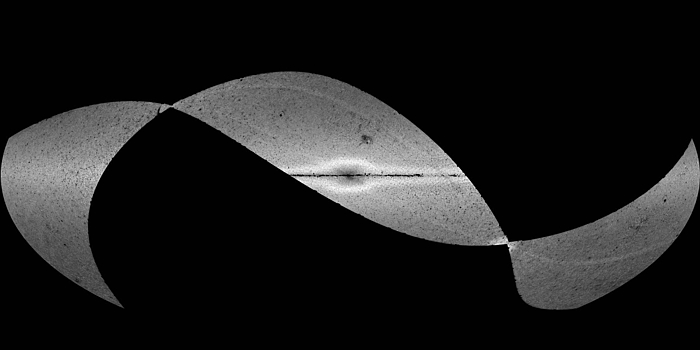 |
| Figure 5 - Hammer galactic projection showing a
grey-scale source count map of unique 3-Band Cryo Release
Source Working Database entries that are detected in W1 with signal-to-noise
ratio >5, and that are not flagged as a spurious detection of artifacts,
and that are not redundant detections in the Tile overlap regions.
Counts are computed in 0.2°x0.2° spatial bins. The full range
is 0 to 1075 bin-1 (0 to 26,875 deg-2).
Galactic north is towards the top and galactic longitude increases
to the left. |
Last Updated: 2012 July 11



